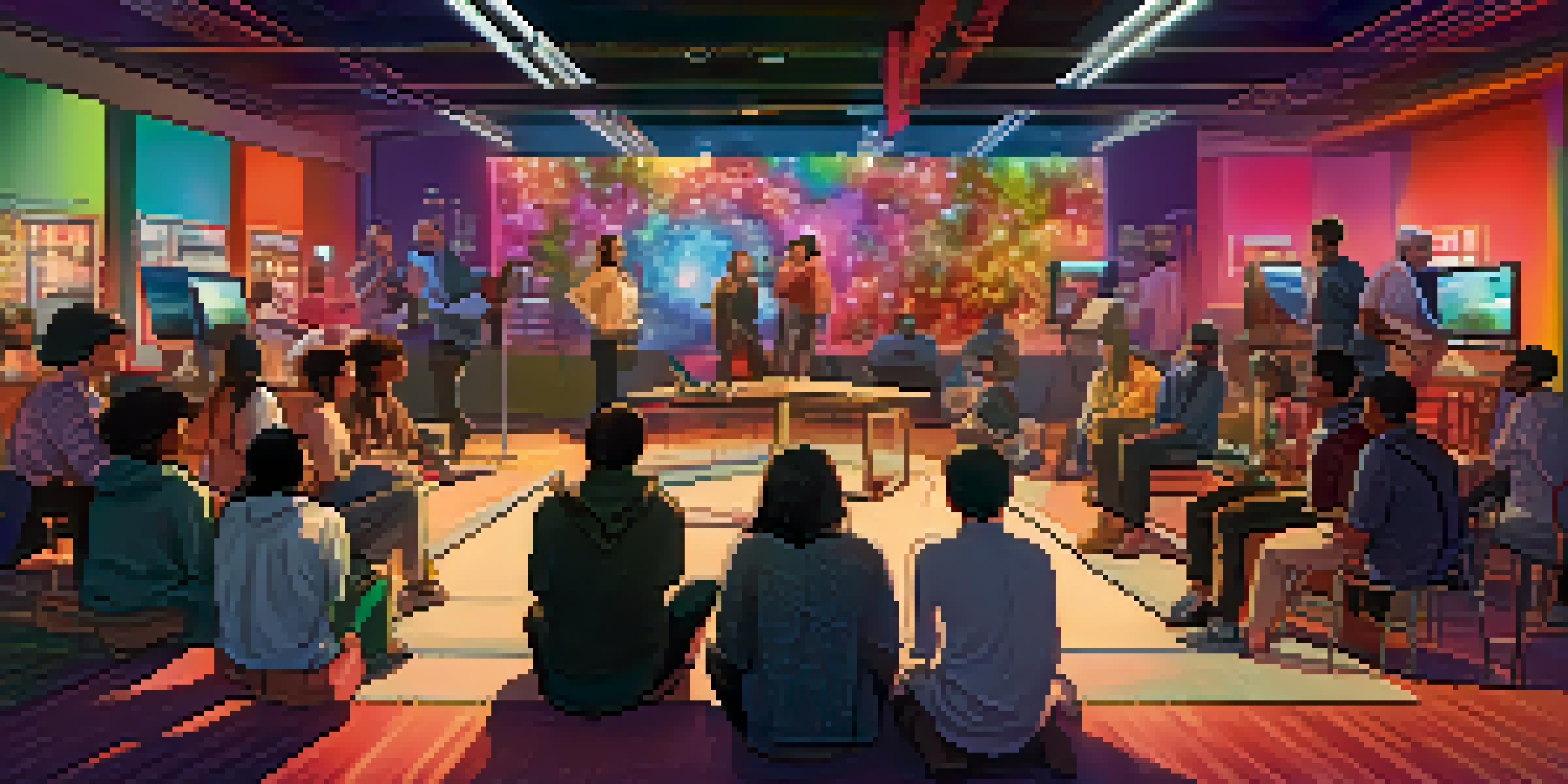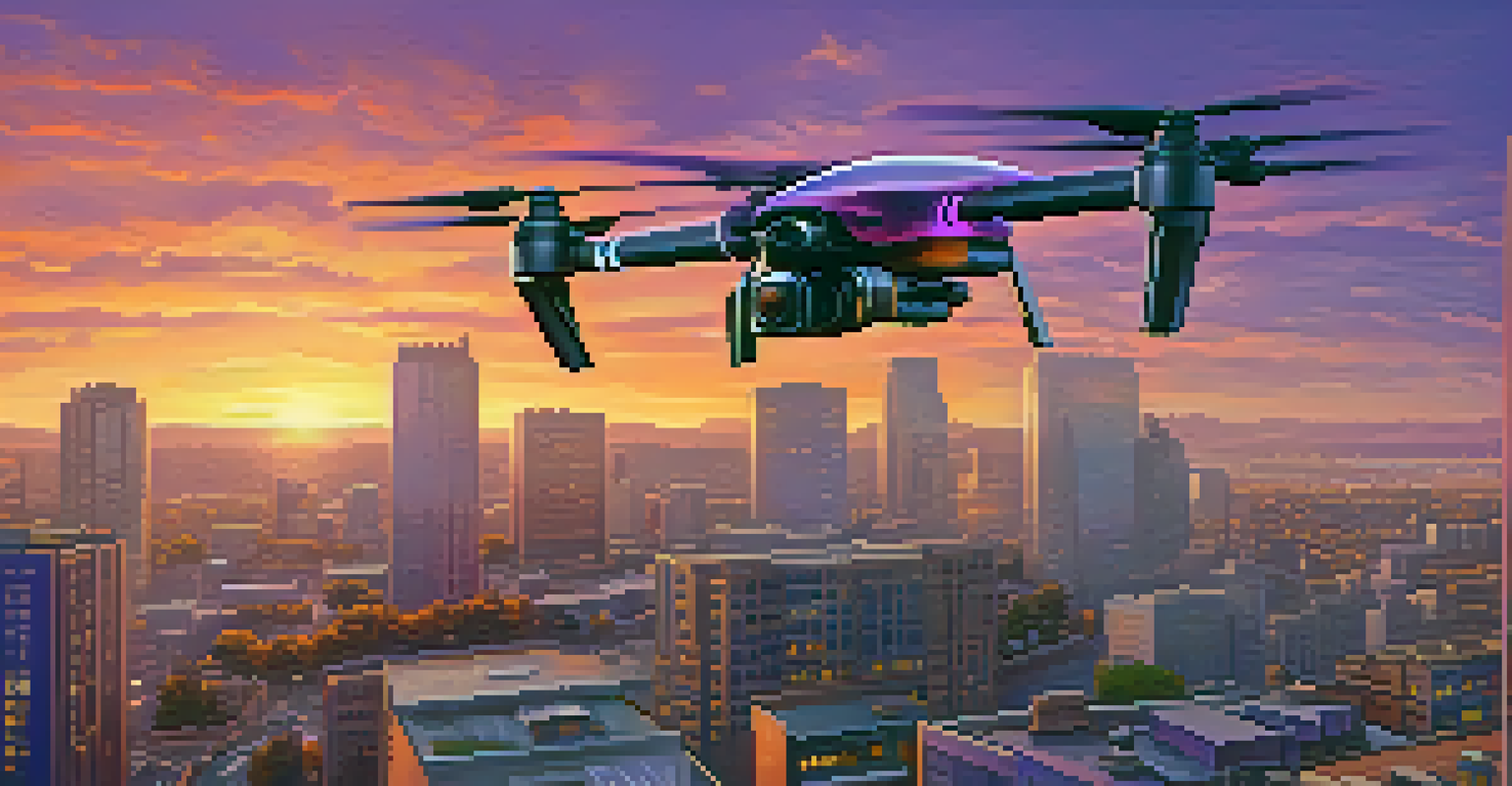Exploring the Aesthetic Shift in 21st Century Cinematic Styles

The Rise of Digital Filmmaking in Modern Cinema
The 21st century has witnessed a significant shift from traditional film to digital filmmaking. This transition has not only altered how movies are made but also how they are viewed, with the increasing accessibility of high-quality cameras and editing software. Filmmakers can now experiment with visual styles in ways that were previously restricted by the limitations of film stock. As a result, audiences are experiencing a broader range of aesthetic choices than ever before.
The best thing about a digital camera is that you can shoot as much as you want without the worry of running out of film.
Digital filmmaking allows for instant feedback during shoots, enabling directors to make real-time adjustments to their vision. This immediacy fosters creativity and encourages filmmakers to take risks with their storytelling and visual representation. For instance, films like 'Tangerine' were shot entirely on an iPhone, showcasing how technology can empower unique narratives.
Moreover, the rise of streaming platforms has further democratized the filmmaking process. Independent filmmakers can now share their work globally without the need for traditional distribution channels. This shift is reshaping the cinematic landscape, with diverse voices and styles emerging from various corners of the world.
Embracing Diverse Narratives and Aesthetics
In the 21st century, there has been a noticeable embrace of diverse narratives that reflect a broader spectrum of human experience. Filmmakers are increasingly drawing inspiration from their cultural backgrounds, leading to a rich tapestry of stories that resonate with varied audiences. This shift has encouraged a more inclusive representation of characters and settings, moving beyond the conventional tropes that dominated earlier cinema.

For example, films like 'Moonlight' and 'Parasite' challenge traditional storytelling by offering fresh perspectives on identity, class, and culture. These narratives not only captivate viewers but also spark essential conversations about societal issues, reflecting a growing awareness of the importance of authenticity in storytelling. The aesthetic choices in these films—from color palettes to cinematography—often serve to enhance the emotional depth of the narratives.
Digital Filmmaking's Creative Boom
The shift to digital filmmaking has empowered creators to experiment more freely, enhancing storytelling and aesthetic diversity.
As audiences seek more relatable content, filmmakers are responding by crafting stories that explore universal themes through culturally specific lenses. This not only enriches the cinematic experience but also fosters a sense of connection among viewers from diverse backgrounds.
The Influence of Social Media on Cinematic Styles
Social media has revolutionized how audiences interact with cinema, significantly impacting cinematic styles in the 21st century. Platforms like Instagram and TikTok have become venues for filmmakers to showcase their work, garnering instant feedback and engagement from viewers. This new dynamic encourages filmmakers to create content that is visually striking and easily shareable, often leading to a more vibrant aesthetic.
Cinema is a matter of what's in the frame and what's out.
For instance, the trend of using bold colors and imaginative visuals can be traced back to the influence of social media. As creators strive to capture attention in a crowded digital space, they utilize eye-catching aesthetics that resonate with audiences scrolling through their feeds. Films like 'The Grand Budapest Hotel' demonstrate this trend by employing a distinctive color palette and meticulous framing that evokes a sense of whimsy and nostalgia.
Additionally, the viral nature of social media trends can shape cinematic styles, as filmmakers experiment with popular themes and narratives. This interplay between social media and cinema creates a feedback loop where trends can quickly rise and fall, ultimately influencing the direction of future film aesthetics.
The Impact of Globalization on Film Aesthetics
Globalization has played a crucial role in shaping the aesthetic of 21st-century cinema by facilitating cross-cultural collaboration and exchange. Filmmakers from different backgrounds are now able to access global stories and techniques, resulting in a fusion of styles that enrich the cinematic landscape. This blending of cultural influences is evident in films that incorporate diverse artistic elements, creating a unique viewing experience.
For example, the collaboration between Hollywood and international filmmakers has led to a rise in hybrid genres that merge traditional storytelling with innovative visual techniques. Films like 'Crouching Tiger, Hidden Dragon' not only showcase stunning martial arts choreography but also integrate Western narrative structures, appealing to a broader audience. This exchange allows for a deeper exploration of themes that resonate universally.
Diverse Narratives Reshape Cinema
Filmmakers are increasingly embracing diverse narratives, leading to richer storytelling that reflects varied human experiences.
Moreover, the accessibility of international cinema through streaming platforms has exposed audiences to a wider variety of aesthetic styles. As viewers become more accustomed to different cinematic languages, filmmakers are encouraged to experiment with their own styles, leading to a richer and more diverse film industry.
The Role of Cinematography in Modern Aesthetics
Cinematography has evolved dramatically in the 21st century, playing a pivotal role in defining modern cinematic aesthetics. With advancements in technology, cinematographers have more tools at their disposal to create visually compelling narratives. The use of drones, high-definition cameras, and innovative lighting techniques allows for breathtaking visuals that can evoke specific emotions and atmospheres.
Consider the film '1917,' which is celebrated for its continuous shot technique, immersing viewers in the experience of World War I. This innovative approach to cinematography not only showcases technical prowess but also enhances the storytelling by making the audience feel as if they are part of the journey. Such groundbreaking techniques are becoming more prevalent, pushing boundaries and challenging the norms of traditional filmmaking.
Furthermore, the artistry of cinematography often reflects the themes and tone of a film. The choice of color grading, camera angles, and composition all contribute to the overall aesthetic, deeply influencing how stories are perceived. As filmmakers continue to explore these elements, audiences can expect to see an increasingly sophisticated relationship between cinematography and narrative.
The Evolution of Editing Styles in Film
Editing styles have undergone a significant transformation in the 21st century, shaping the pacing and flow of modern films. With the rise of digital editing tools, filmmakers have more flexibility to experiment with unconventional editing techniques, leading to a departure from traditional linear storytelling. This evolution is evident in films that employ rapid cuts, non-linear narratives, and even the use of montage to convey complex ideas.
A prime example is 'Birdman,' which creates the illusion of a single continuous shot through seamless editing transitions. This technique not only enhances the immersive experience but also reflects the protagonist's psychological state, blurring the lines between reality and performance. Such innovative editing styles challenge viewers to engage more actively with the narrative, prompting them to piece together the story.
Social Media Influences Film Style
The rise of social media has transformed cinematic aesthetics, encouraging visually striking and shareable content that resonates with audiences.
The impact of editing on cinematic aesthetics also extends to the emotional tone of a film. The rhythm of cuts can heighten tension, evoke laughter, or create moments of reflection, making editing a vital tool in the storyteller's arsenal. As filmmakers continue to refine their editing techniques, audiences can anticipate a richer, more dynamic cinematic experience.
The Future of Cinematic Aesthetics
As we look to the future, the evolution of cinematic aesthetics shows no signs of slowing down. Emerging technologies, such as virtual reality (VR) and augmented reality (AR), are poised to redefine how stories are told and experienced. These innovations open up possibilities for immersive storytelling, allowing audiences to engage with narratives in entirely new ways, blurring the line between viewer and participant.
Additionally, the increasing emphasis on sustainability in filmmaking is influencing aesthetic choices. Filmmakers are exploring ways to create visually stunning works while being mindful of their environmental impact. This shift is prompting a reconsideration of production practices and encouraging the use of eco-friendly materials and techniques, potentially leading to unique visual styles that reflect this commitment.

Ultimately, the future of cinematic aesthetics will likely be characterized by an ongoing interplay between technology, culture, and storytelling. As filmmakers continue to push boundaries and explore new avenues for expression, audiences can expect a rich and ever-evolving cinematic landscape that captivates and inspires.